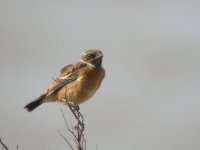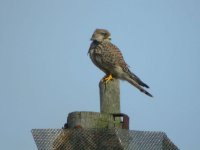tracker
Tom
Hi,
I am feeling slightly dejected right now regarding the results of recent trips out digi-scoping. I have been convinced that the pics to bring home and download are gonna be so sharp and clear (thats how they seem on the cp4500 monitor)
Then once uploaded to my computer, im so disappointed by how out-of-focus they appear. Ive tried lower magnification shots, ive tried a Jessops slide viewer over the LCD monitor, (which i find makes focussing of an image even harder, and so im presuming the X-Tenda view kit to be the same) ive lowered my tripod, attached a shutter release cable, learned to hold my breath for some serious lengths of time........ :eek!: .......Im fast running out of ideas now.
The problem seems to be, most times anyway, that i can get most of the birds body in focus, but the head always seems to be out of focus.
Is there a way of focussing in on the birds head, (im looking for a good tip on this one.... ) or does it all still boil down to using an LCD magnifier on the monitor?
) or does it all still boil down to using an LCD magnifier on the monitor?
I am aware of the soft-focussing of the cp4500, but i know on other subjects sharp pictures can be taken. I use a Swaro ST80HD scope, so i dont think thats the problem either.
Im finding this so very frustrating. Each time i view my results on the pc im convinced i wont be going back out 'digi-ing' again. (although i dont really believe this.... )
)
Any ideas on how i can improve in this area will be much appreciated,
thanks
tracker
I am feeling slightly dejected right now regarding the results of recent trips out digi-scoping. I have been convinced that the pics to bring home and download are gonna be so sharp and clear (thats how they seem on the cp4500 monitor)
Then once uploaded to my computer, im so disappointed by how out-of-focus they appear. Ive tried lower magnification shots, ive tried a Jessops slide viewer over the LCD monitor, (which i find makes focussing of an image even harder, and so im presuming the X-Tenda view kit to be the same) ive lowered my tripod, attached a shutter release cable, learned to hold my breath for some serious lengths of time........ :eek!: .......Im fast running out of ideas now.
The problem seems to be, most times anyway, that i can get most of the birds body in focus, but the head always seems to be out of focus.
Is there a way of focussing in on the birds head, (im looking for a good tip on this one....
I am aware of the soft-focussing of the cp4500, but i know on other subjects sharp pictures can be taken. I use a Swaro ST80HD scope, so i dont think thats the problem either.
Im finding this so very frustrating. Each time i view my results on the pc im convinced i wont be going back out 'digi-ing' again. (although i dont really believe this....
Any ideas on how i can improve in this area will be much appreciated,
thanks
tracker






